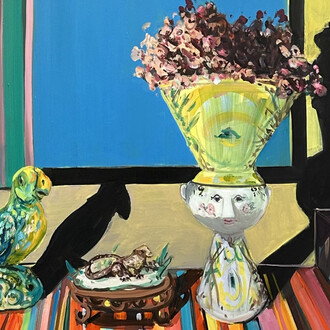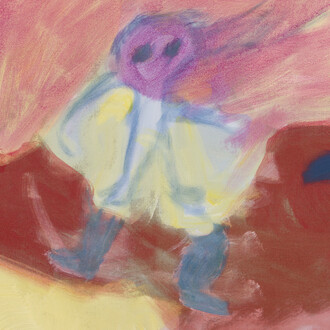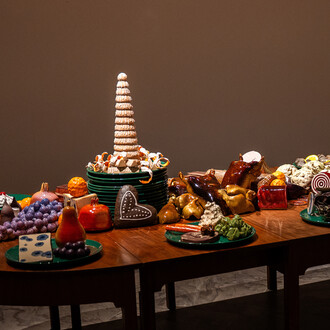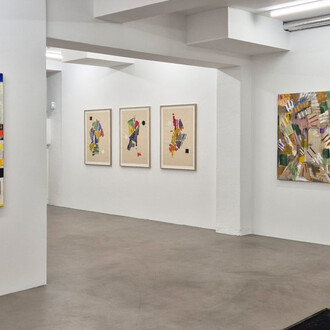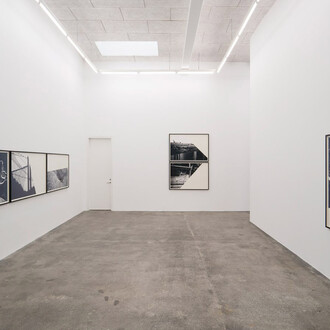Marie Kirkegaard is proud to present The Distorted Landscape by Los Angeles-based artist John Knuth. This is Knuth’s third solo show at the gallery, and presents a new series of works offering us a glance at the landscape of Los Angeles today, as the artist envisions it.
In this work, John Knuth continues to reinvent how an image is made, and how that process informs the work’s meaning. The Distorted Landscape reflects Knuth’s commitment to exploring how we make images of our changing landscape. To do this, Knuth employs Mylar, the highly reflective, razor-thin material often used for emergency blankets. When pulled taut it can visually recall the reflective solid quality of a mirror or polished steel. The artist pulls and disrupts the surface, melting the Mylar and creating tension. In the new series Sky, the surface ruptures reveal a monochromatic painted canvas below. Knuth describes these as ‘sci-fi sunsets’ due to their compositions and colors.
In The Distorted Landscapes the mirrored Mylar is layered in mountain silhouette forms, and as the material is cut, stapled, stretched and pulled, ripples form that cause the Mylar to distort. These ripples echo the natural forms of the landscapes, but they also alter the reflection of what is in front of them.
In addition, Knuth will show a brand new series, Homeless, combining the mirrored distorted Mylar material with cardboard signs bought over the course of a decade from the homeless population of LA. He sees the homeless signs as touching self-portraits of the people holding them. They are honest drawings with profound statements like ‘Anything helps’, ‘Please help’, ‘Hungry’, etc. Over the past several years homelessness in Los Angeles has exploded. This is, as the artist points out, ‘the new landscape of LA – not the palm trees’. In this way, the Homeless series is meant to be landscape paintings, reflecting the city today.
Thus The Distorted Landscape does not offer a fixed view of what the landscape is rather it proposes a vision of an ever changing environment that shifts as we interact with it. In Knuth’s mirrored landscapes we interrupt the landscape ourselves as we stand in front of it and move around it. The viewer see themselves and their surroundings reflected in these surfaces, albeit distorted and ruptured.









